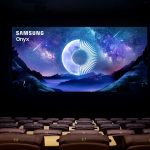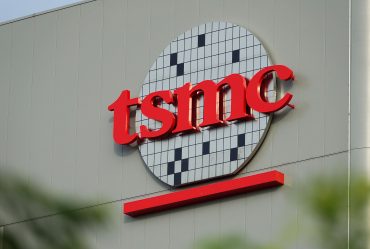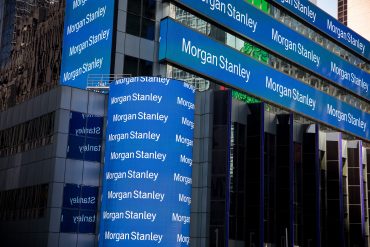

Global semiconductor market faces disruption as Samsung’s chip export restrictions to China trigger major profit decline
Key Takeaways
- Samsung operating profit plunges 56% to 4.6 trillion won ($3.3 billion) in Q2, falling 23.4% below analyst expectations due to semiconductor division struggles
- US export restrictions on AI chips to China leave Samsung’s high-tech chip facilities underutilized, while delayed shipments of advanced AI processors impact earnings
- HBM chip qualification challenges with Nvidia hinder Samsung’s ability to capitalize on AI demand, as competitor SK Hynix outpaces the company in this crucial market segment
Introduction
Samsung Electronics faces a harsh reality check as the world’s largest memory chipmaker reports a dramatic 56% collapse in second-quarter operating profit. The company projects earnings of just 4.6 trillion won ($3.3 billion) for the quarter ended June 30, down from 10.4 trillion won the previous year.
This steep decline stems from persistent challenges in Samsung’s semiconductor division, including delayed AI chip shipments and the impact of US trade restrictions on China exports. The forecast significantly underperforms market expectations, falling 23.4% below analyst estimates and highlighting the volatility gripping the global semiconductor industry.
Key Developments
Samsung’s regulatory filing reveals operating profit dropped 31% from the previous quarter, with revenue remaining flat at 74 trillion won compared to 74.07 trillion won a year earlier. The company attributes this decline to one-off costs within its memory division, including inventory revaluations and technical challenges.
US export restrictions on advanced AI chip deliveries to China have significantly impacted Samsung’s operations. Washington has intensified curbs on cutting-edge semiconductor technology exports, citing military application concerns. These restrictions leave Samsung’s high-tech chip facilities underutilized, directly affecting profitability.
The company faces mounting pressure in the high-bandwidth memory (HBM) chip sector, crucial for AI development. Reports indicate Samsung’s HBM products failed to pass quality tests by Nvidia, the dominant AI GPU maker that accounts for approximately 70% of global HBM demand.
Market Impact
Samsung Electronics shares fell as much as 1.13% during early trading following the profit warning announcement. Despite this setback, the stock has risen over 16% year-to-date, according to LSEG data, reflecting investor optimism about long-term AI-driven growth.
The semiconductor giant’s global market share reached 10.6% in 2024, maintaining its leadership position despite intense competition. Samsung’s semiconductor revenue surged 62.5% in 2024 to $66.5 billion, driven by memory price recovery and AI demand, yet the sharp Q2 profit decline exposes ongoing margin pressures.
Market analysts estimate Samsung’s semiconductor unit posted an operating profit of around 1 trillion won in the first quarter, highlighting the dramatic deterioration in Q2 performance. The weakening Korean won against the dollar in June may have further dented both sales and operating profit margins.
Strategic Insights
Samsung’s struggle to compete with SK Hynix and Micron in the HBM chip market represents a critical strategic challenge. SK Hynix has outpaced Samsung as a key supplier for Nvidia, exacerbating competitive pressure in this high-growth segment essential for AI applications.
The company’s foundry business continues to generate losses, with research director MS Hwang of Counterpoint Research attributing part of the disappointing earnings to ongoing foundry struggles. This non-memory division is expected to reduce losses in the third quarter as utilization rates improve.
Samsung’s technical issues with HBM3E chips, specifically overheating problems, require immediate resolution to gain Nvidia qualification. This step proves vital for securing future growth in the AI supply chain, where data center demand continues expanding rapidly.
Expert Opinions and Data
Tom Hsu of TrendForce indicates that “the foundry business was weak, while the performance of the memory business stayed relatively stable.” Samsung expects improved HBM products are “currently being evaluated and shipped to customers,” suggesting potential recovery ahead.
According to the Financial Times, the company’s performance reflects broader semiconductor sector volatility despite recent market share gains. Ray Wang from Futurum Group notes that while Samsung secured some HBM supply contracts with AMD, these contributions are unlikely to impact second-quarter results.
Chae Min-sook of Korea Investment and Securities points to “sluggish sales of HBM products, a decline in NAND flash prices and a stronger Korean won” as key factors behind the worse-than-expected performance. Roh Geun-chang, chief researcher at Hyundai Motor Securities, forecasts that “Samsung Electronics’ operating profit appears to have bottomed out in the second quarter and is expected to show gradual improvement.”
Conclusion
Samsung’s profit warning underscores the complex dynamics facing the semiconductor industry, where rapid revenue growth can be offset by cyclical pressures and technical challenges. The company’s strategic focus on AI-aligned products and ongoing efforts to resolve HBM qualification issues position it for potential recovery.
Analysts anticipate a rebound in the third quarter, supported by recovering memory chip prices and improved factory utilization. Samsung’s ability to capitalize on the broader AI trend, with IT spending forecasts reaching $5.75 trillion in 2025, remains crucial for sustaining long-term growth despite current profitability pressures.








